“Canned” tuning defined
The clearest example of a “canned” tune is the off-the-shelf handheld programmer that you can buy at, say, the local autoparts store. This is a device that contains a pre-written tune for a vehicle (or many vehicles). Basically, you plug it in, the programmer reads out your OE calibration, makes changes to it, then writes (flashes) it back to the vehicle. In some cases, you may have limited options for adjustment, like to adjust the speedometer calibration for different sized tires.
This type of tuning is generally designed for stock vehicles, or vehicles that have modifications that are compatible with the OE calibration.
Benefits:
1. Easy to use
2. Low cost
3. Able to make limited adjustments
4. Great for “casual” tuning customers that want a performance boost without a bunch of hassle
Drawbacks:
1. Can't support major modifications out of the box**
2. Tuning is generally more conservative because of vehicle to vehicle variances
3. The engineers that developed the calibrations may have more generalized tuning expertise
4. Little recourse if the vehicle doesn't operate properly for some reason
“Canned” tunes are generally considered “mass market” in that they appeal to a wide variety of customers. They are generally less expensive than “customized” tuning, and easy to install by the end customer. However, they are largely for stock or lightly modified vehicles (e.g. you're unlikely to find an off-the-shelf programmer that has built in support for an aftermarket cam in your Corvette).
In designing a “canned” tune, one has to consider the range and condition of vehicles it might be run on, and this means the tuning “aggression” may be lower. Calibration engineers that develop these calibrations may have a more general set of tuning skill as opposed to expertise in a specific vehicle. Lastly, what do you do if the vehicle doesn't run right, or has a problem? About the most you can do is uninstall the programmer and return it for a refund or sell it to someone else.
** - some of the programmers on the market can also receive customized tuning from network tuners
“Customized” tuning defined
“Customized” tuning, on the other hand, involves the iterative process of making tuning changes, collecting data (via “datalogging”, wideband, dyno, etc.), and then making further adjustments until the calibration is deemed “complete”. This process involves the use of commercially available calibration software to make the iterative changes. The process is executed either by an end customer with tuning expertise or by enlisting the services of a “tuner”.
Benefits:
1. Capable of supporting almost any modification the tuner has expertise in
2. Tune can be “individualized”, or “dialed in” for a specific vehicle in a specific locale
3. Higher level of customization is possible (virtually any parameter can be customized)
4. Comprehensive performance data can be available
Drawbacks:
1. More expensive (up to 4-5 times), more time consuming, may need “retuning” later
2. No common standard of quality in the end product
3. Limited by the capabilities of the software being used
4. Tuning process may include elements that aren't understood by the tuner
The “customized” tuning process generally happens one of a few ways. One way is a customer brings a vehicle to a performance shop for a “dyno tune”. Another way is a customer meets up with someone locally who has the tuning software. The third common scenario is “remote custom tuning” where the customer works with a tuner in a remote location, generally over the internet to go through the iterative tuning process.
Most “heavy modifications” like forced induction conversions (e.g. supercharger or turbocharger kits), camshaft changes, or other engine internal changes require extensive recalibration in order for the vehicle to operate properly. Many of the larger forced induction kit manufacturers include some sort of calibration for the kit (and in some cases it may even carry a CARB EO number). A performance shop may install the kit, the calibration, then “dial it in” as needed. In other cases the performance shop may have to tune the kit from scratch, starting with the OE calibration which can be time consuming.
In almost every case, with “customized” tuning, the tuner has greater access to tuning customization because in theory any parameter can be modified with the software. With an off-the-shelf programmer, for instance, you might be able increase the transmission shift firmness in a general way, but with a “customized” tune you can be more specific and adjust the shift firmness only on the 2-3 shift at part throttle. And, because the “customized” tuning process relies on iterations of data from the vehicle (which may include chassis dyno results), there's more information available about how the vehicle is performing.
However, because this process is iterative, it also means it can be time consuming for both the end customer and the tuner, because the vehicle needs to have data recorded from it as part of the iterative process. In the context of a “dyno tune”, dyno rates are generally assessed by the hour and can be upwards of $300/hr just for the dyno time. On top of that you have software licensing costs. Most of the commercially available calibration packages charge a per-vehicle license fee, which, in extreme cases can exceed $600 / vehicle (e.g. if ECU unlocking services are required). And, tuners don't work for free – in many cases they charge an hourly rate as well. A full “customized” tune can easily cost upwards of 4-5 times what an off-the-shelf programmer might cost.
The biggest drawback to the “customized” tuning process is that there's no common standard of quality – in other words, there are some really good tuners and there are some who are tuners simply by virtue of owning a laptop and the tuning software. There's also the issue of tuners being proficient on one type of vehicle, and the opposite on another. Anybody with a laptop and a few hundred dollars can become a “custom tuner”, and some of these tuners associate their competence with the software they are using as a common brand rather than the actual quality of their end product. The companies producing the calibration software don't really take any action to make a distinction here, but at the same time they cannot enforce a common standard of quality, they're just producing a tool that other people use, and in some cases the tool is incomplete.
As anybody who deals in knowledge and information as a trade, it's expected that there's some level of 'mysticism' around how a tuner knows what they do and where they learned their techniques from. Aside from their personal experience, this can come from many places including tuning schools, training materials, online discussion boards, discussions with other tuners, reverse engineering of other tuning products or studying tunes from other tuners. Sourcing knowledge this way without fully understanding the “how” or “why” can allow unknown and potentially undesireable artifacts to get into an end customer's tune.
The other issue is that a “customized” tune is completed at a specific point in time, under specific conditions (vehicle, environment, etc). For a customer that stays within a specific locale and only drives their vehicle under similar conditions (e.g. seasons), this may not be an issue, but does the tuner know how your vehicle is going to perform in the middle of winter at sea level if they “custom” tuned it in the middle of summer at 4000 feet altitude? The larger kit manufacturers that provide a calibration with, say, their supercharger kit probably do, but a tuner at a dyno shop probably doesn't. If there are problems with it in different environments, it may be necessary to perform follow-up tuning adjustments which is time consuming, and potentially disruptive to the end customer.
Finally, there's no guarantee the software tools being used for this process are complete and provide access to all the constructs in the ECU required to properly calibrate the vehicle. In fact, there's no guarantee even the OE software that runs in the ECU has all of the necessary constructs to properly support the calibration of a heavily modified vehicle. E.g. the software engineers that wrote the ECU software for a naturally aspirated Corvette would not have put much consideration into what would happen if the aftermarket installed a supercharger.
TRIFECTA tuning, defined
Ok, so we have defined “canned” tuning, and “customized” tuning. Where does TRIFECTA fit on the spectrum? It turns out TRIFECTA products borrow from the advantages of each while offering other advantages that don't come with either type of tuning.
Advantage: Pricing
TRIFECTA products, in most cases, are priced to be competitive with off-the-shelf “canned” programmers. These programmers are lower cost because the manufacturers of them are not directly subject to the per-vehicle licensing fee like the “customized” tuners are, and there's no tuner looking to monetize the service. They also benefit from economies of scale.
TRIFECTA similarly enjoys a low overhead because all of TRIFECTA's flash software was written in-house, is not reliant on any 3rd party, and as such is not subject to expensive licensing fees.
Advantage: Ease of Use, little hassle
TRIFECTA products are installed using a Windows based laptop combined with a USB cable that interfaces with the vehicle via the OBD-II port. This is also how most “customized” tuning software works as well. The ease of use advantage is that with TRIFECTA, the calibration work is already done. There's no learning curve for how to use a calibration software package, you just install a simple Windows based application, load the calibration, and you're finished.
Advantage: Expertise, on your vehicle
TRIFECTA doesn't offer tuning products for vehicles they haven't exhaustively calibrated and spent significant amounts of time with. Many other companies in the industry will ask for “R&D vehicles” from the market, or even experiment on customer vehicles as a generally accepted procedure while TRIFECTA makes an enormous investment in having a fleet of vehicles for ongoing campaigns. We share engaging content of these vehicles through the web and social media.
Advantage: Support for modifications, small and large
TRIFECTA has an aggressive directive to build a knowledge base of support for aftermarket modifications. Again, while retaining an appealing price-point, TRIFECTA can and does also support modifications that, through any other tuning company, would have to be supported through “customized” tuning. Need a tune for that custom aftermarket sheet metal intake for your Chevrolet Cruze? No problem, we've got you covered.
Advantage: Tuning products can be “individualized” or “dialed in” if needed
Many TRIFECTA products offer an Elite tier. This is a higher priced tier that provides “remote customized” tuning support for parts we may not have an off the shelf calibration for. TRIFECTA's team of calibration engineers has vast experience in virtually every type of modification out there and allows customers to leverage this knowledge through the Elite tier.
Advantage: If you do have a problem, we've got you covered
TRIFECTA offers products at the price-point of a “canned” tune but provides diagnostic services, knowledge, experience, and capabilities that can rival factory-authorized service centers. In the majority of cases, if there's a vehicle that isn't running correctly, it's because there's a problem with the vehicle (though in some cases software incompatibilities can reveal issues that need to be resolved at the tuning level). That doesn't mean you're out in the cold, though. Regardless of what product tier our customers have, TRIFECTA provides full diagnostic services and support as needed to help track down the issue, whether it's vehicle, software, or tuning related.
Advantage: We abuse our cars on the dyno, drive them across the country
Can your tuner claim and prove they put several hundred dyno pulls on their Cadillac ATS-V then drove the car across the country through various climates and environments before selling you a product? TRIFECTA can. The aggregation of the data gathered from this type of process makes our products more thorough.
Advantage: Common standard of quality
Our calibrations are developed by the same engineers, with the same processes and level of experience. When you buy TRIFECTA, you're buying a standard of quality you can't be assured to get from any arbitrary tuner that promotes themselves by saying they use the same tools as other tuners do. Many “customized” tuners learn by tuning other people's vehicles. Is yours the first? Second? TRIFECTA has been in the industry for nearly 15 years (at time of writing).
Advantage: Innovation and exclusive features
These are some of the exclusive features that TRIFECTA offers that can't be had anywhere else, and in some cases that's because these features don't even exist in the OE software. TRIFECTA approaches performance and reliability from a holistic standpoint and will add exclusive features where it makes sense from a customer demand or reliability standpoint.
-
Driver Selectable Vehicle Modes (“DSVM”) - changes the performance level or drive feel on the fly with the cruise control switch
-
Power-by-Mode (“PBM”) – An extension of DSVM for select platforms with factory drive-mode selectors, we can assign different power levels to each mode, as well as change driving characteristics (pedal feel and shift strategy):
-
e.g. ATS-V
- Tour: Stock power, stock shifting
- Sport: Moderate power increase over stock, performance oriented shift strategy
-
Track: Full power, performance oriented shift strategy
-
Advanced Rail Pressure Management (“ARPM”) - Dynamically adjusts airflow limits based on the DI fuel system saturation level
-
2017+ Transmission Recalibration (“T87A”) – We can recalibrate your “T87A” controlled transmission (8, 9, 10-speed) without removing the TCM, let alone paying for an expensive unlock procedure.
-
Performance AutoStop Mode (“PASM”) – Allows the driver to enable a performance-oriented auto-stop mode which, in most cases, inhibits auto-stop from enabling for improved performance character, when desired (triggered by the cruise control arming button)
- AutoStop Deletes - A new product line that simply disables the factory “autostop” feature! Introduced as a fuel-savings feature, “autostop” allows the vehicle to shut the engine off when the vehicle is stopped, and quickly restart it when the driver is ready to move the vehicle, but not all vehicle owners feel it works smoothly enough.
Advantage: Continuous innovation and improvement
“Customized” tuning is largely a one-time deal. You get tuned, that's it. There may be minor adjustments as needed, but there's no real infrastructure in place to give out “mass updates” that make improvements to customers. Because of this, and frankly the lack of a financial aspect, there's little incentive to put a dedicated focus on innovation and improvement.
TRIFECTA views continuous innovation and improvement as core tenets of business. The Chevy Cruze launched in late 2010 - at the time of writing that was over 8 years ago. To this day, we still have an active campaign to improve the feature-set of the product and we make these improvements available to every customer.
Disadvantage: Can't use commercial tuning software to modify TRIFECTA
On the surface, some may feel this is a “vendor lock-in” strategy. That might be the case if we didn't provide a means to uninstall the product and restore the capability of it to be used with other tuning software or OE updates – but we do. At the time of writing, the commercially available tuning software packages require the vehicle to have either completely OE software, or a modified derivative of OE software. A TRIFECTA tuned vehicle is neither, but can easily be restored to OE software using our tools.
Disadvantage: TRIFECTA's bar is high for supporting aftermarket modifications
While our “remote custom” tuning services give our engineers the tools to tune virtually any build remotely, consideration is given to whether we can do it in a timely manner and smoothly for the end customer. The only thing that's worse than declining to tune a project for a customer is accepting the project (and customer's money), and then not being able to deliver a quality tuning product in a timely manner. We believe expectations need to be set appropriately and being able to deliver quality is more important than selling a calibration to a customer.
Disadvantage: TRIFECTA's data logging format is proprietary (like everybody else's)
TRIFECTA's flash utility can also generate “data logs” from customer vehicles, but the data is stored in a proprietary format - in the same way other commercial tuning software uses a proprietary format. In fact, it's considered a modern computing security concern to use a proprietary format to protect the authenticity of the information being transmitted.
Unlike other software, however, we do not provide a public viewer for this data, and rely on a series of non-public tools to process the log data. Having said that, data logging of a TRIFECTA calibration can still be performed using any tool that supports data logging the vehicle, though, and we can provide recommendations that are compatible with our flash cable for customers that wish to review the data from their vehicle as well.
Conclusion
We're not here to say that TRIFECTA is a perfect fit for every tuning situation, because we aren't. The goal in this writing is to put some definition around the terms sometimes used to describe our products. On the surface we do look like a “canned tune”. We're priced like one, we provide many of the advantages of one, but we also bring to the table many of the advantages of “customized” tuning. But, in the end, the intersection of these benefits combined with our exclusive features and offerings put TRIFECTA into a class of its own.

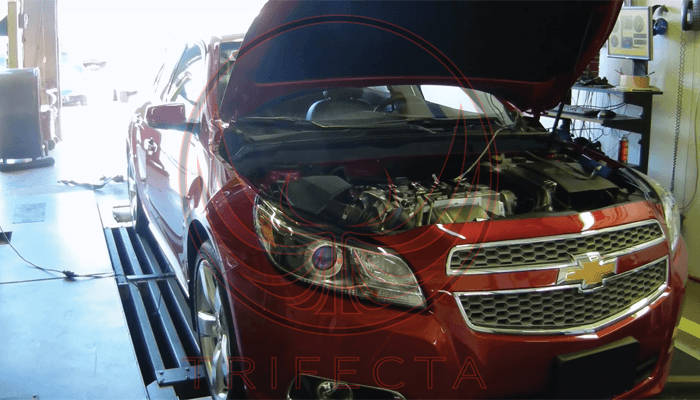

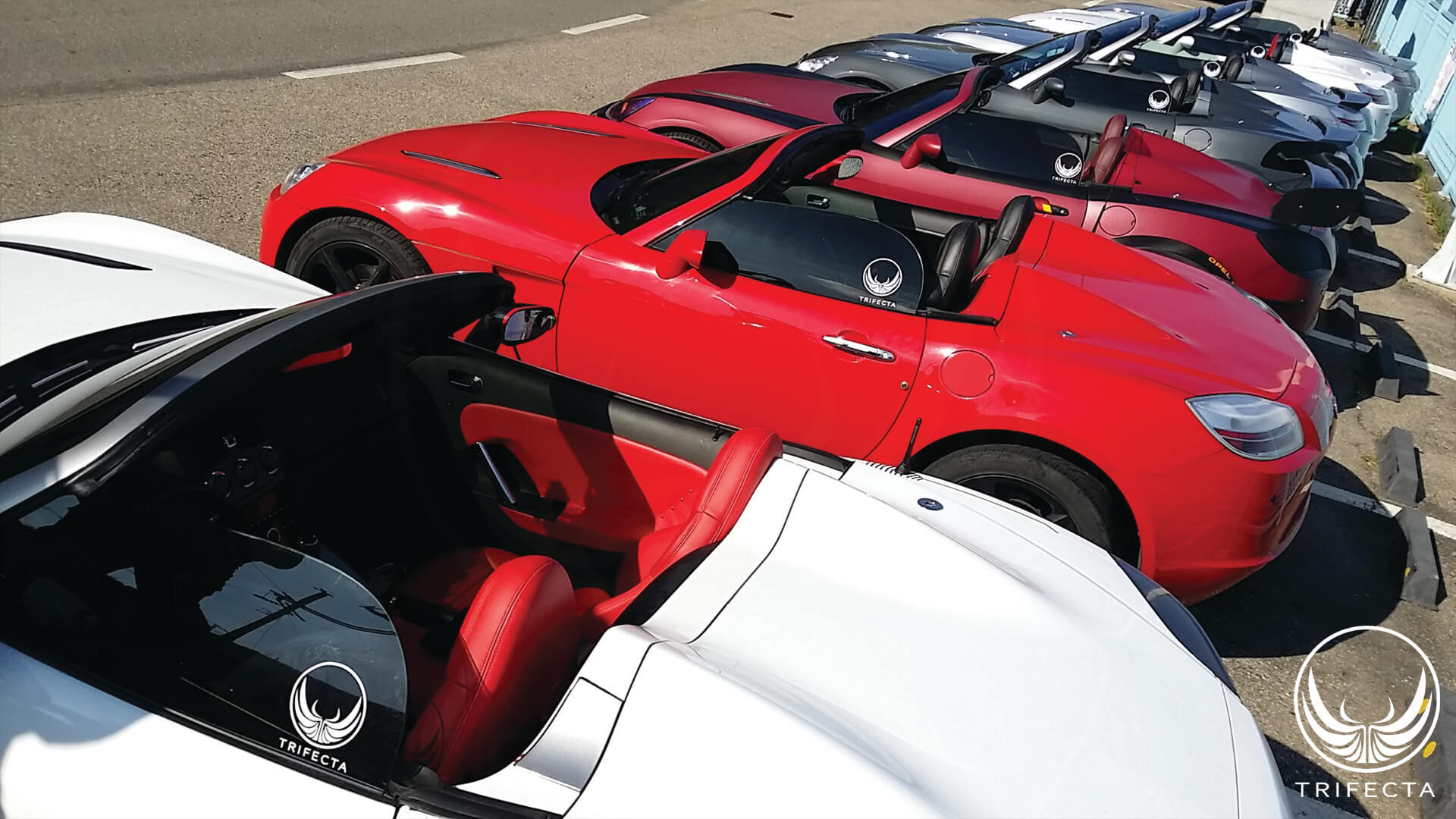
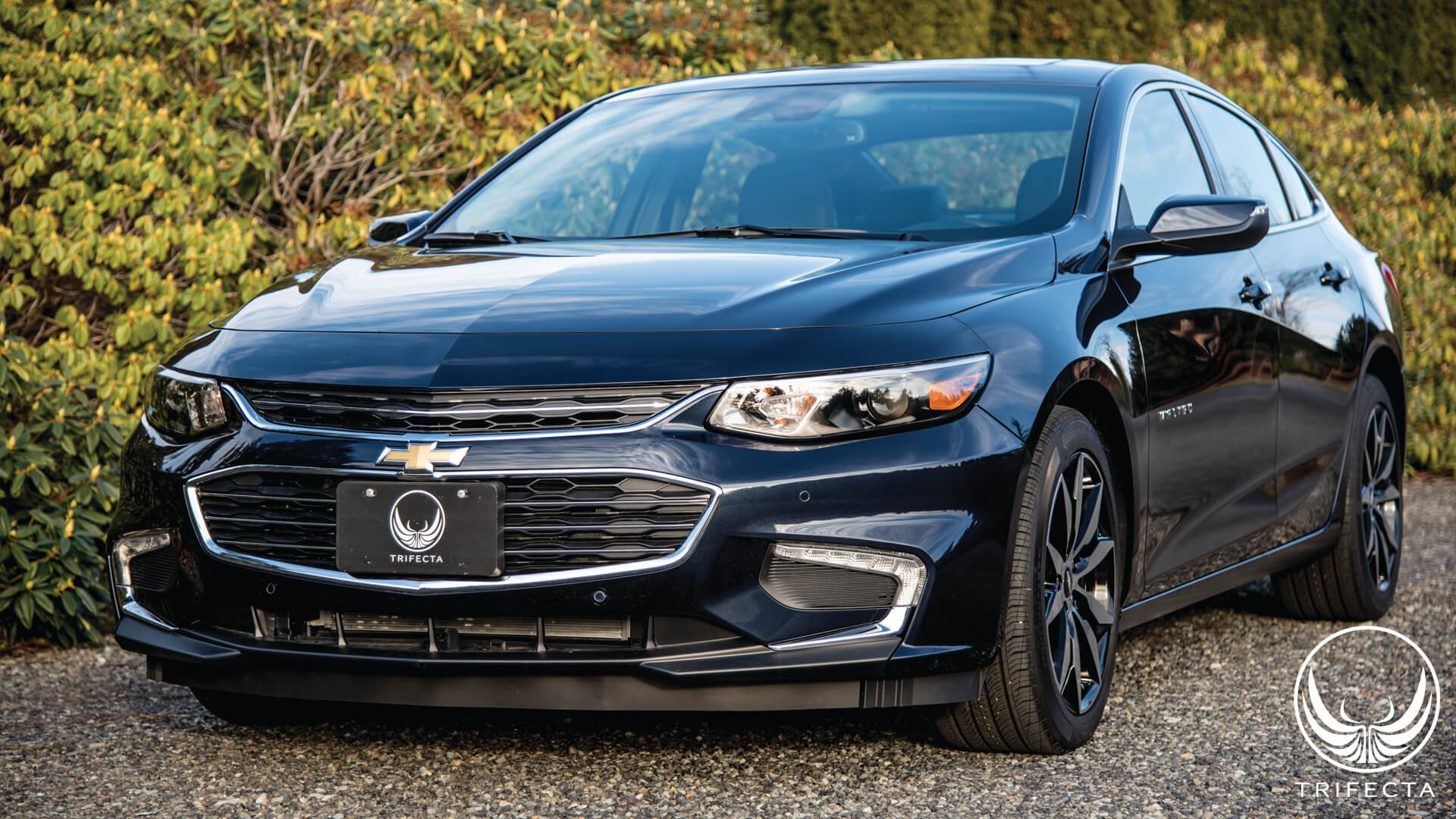




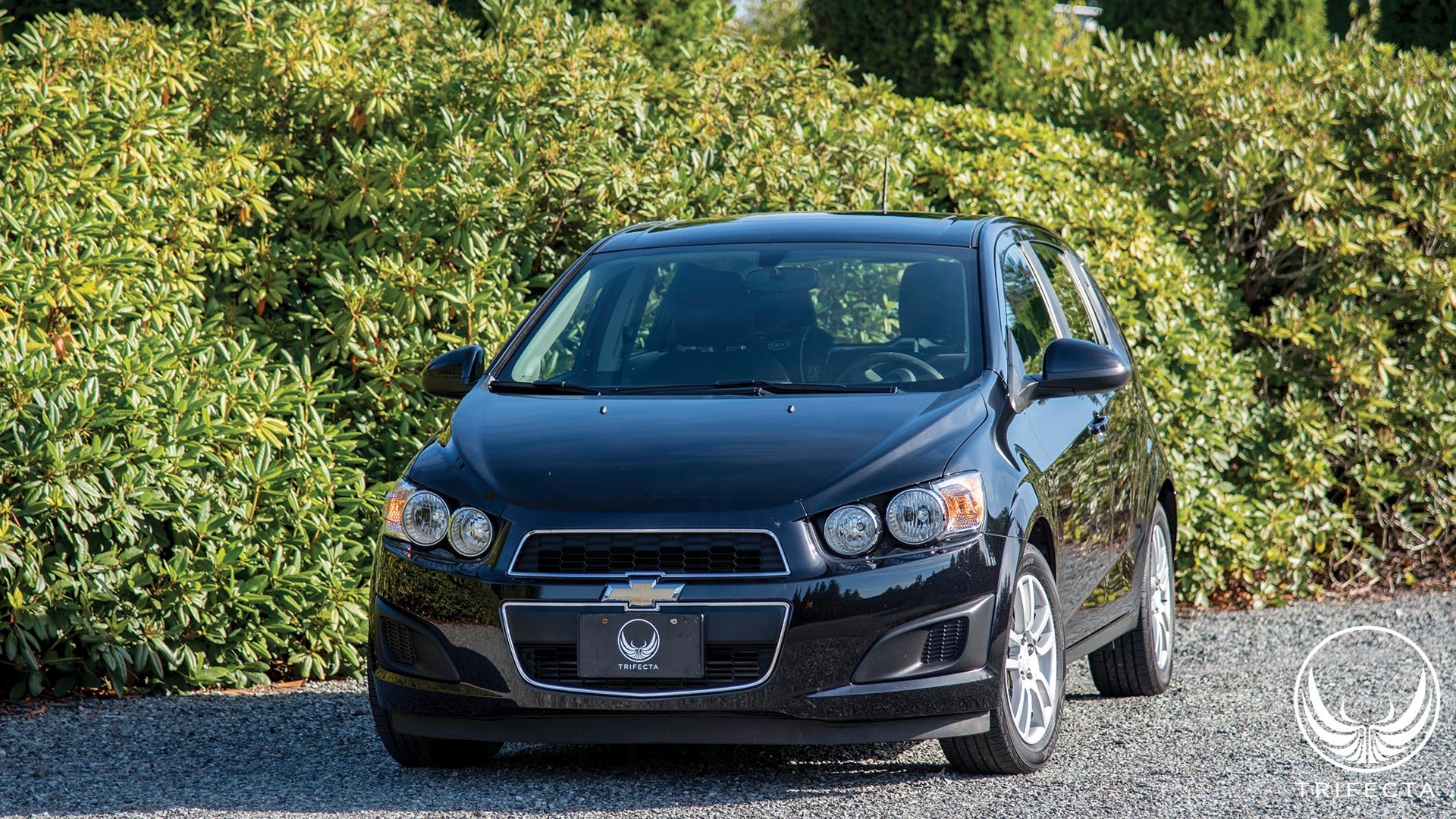

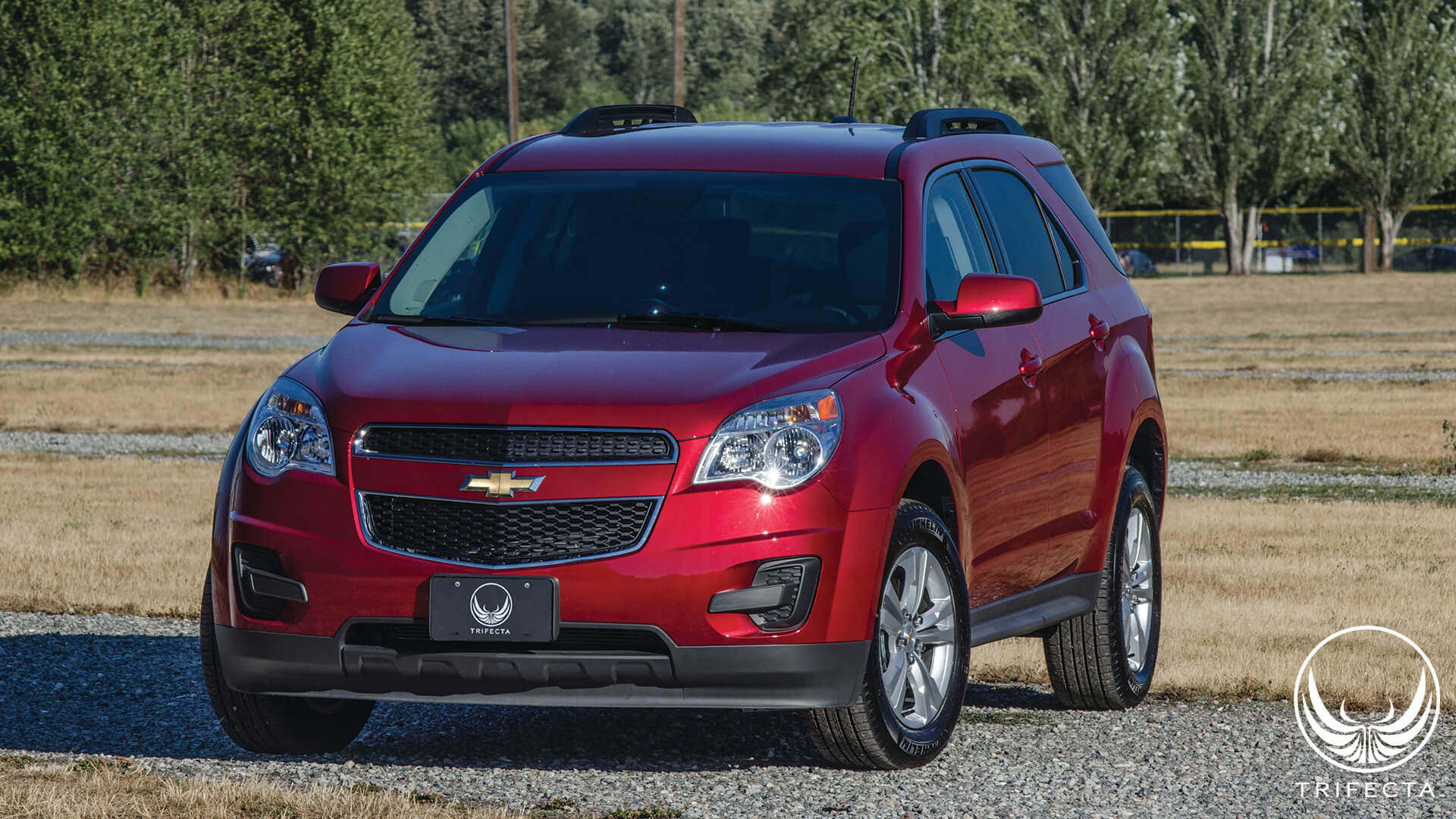

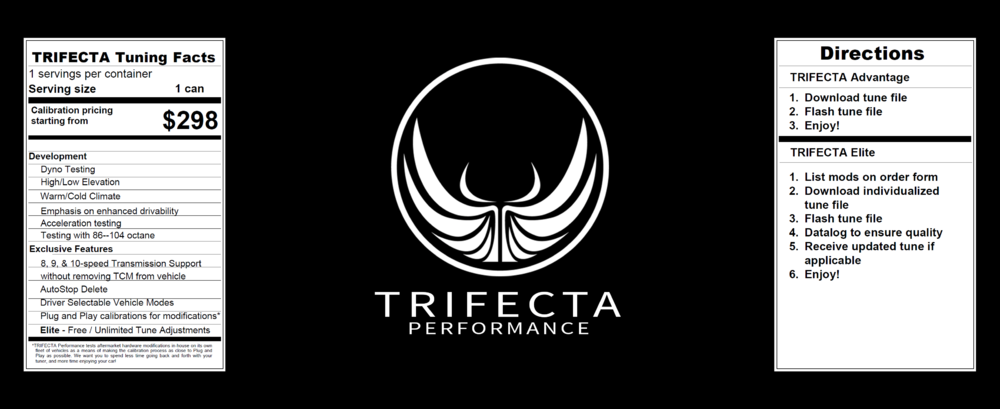


Recommended Comments
There are no comments to display.
Join the conversation
You can post now and register later. If you have an account, sign in now to post with your account.